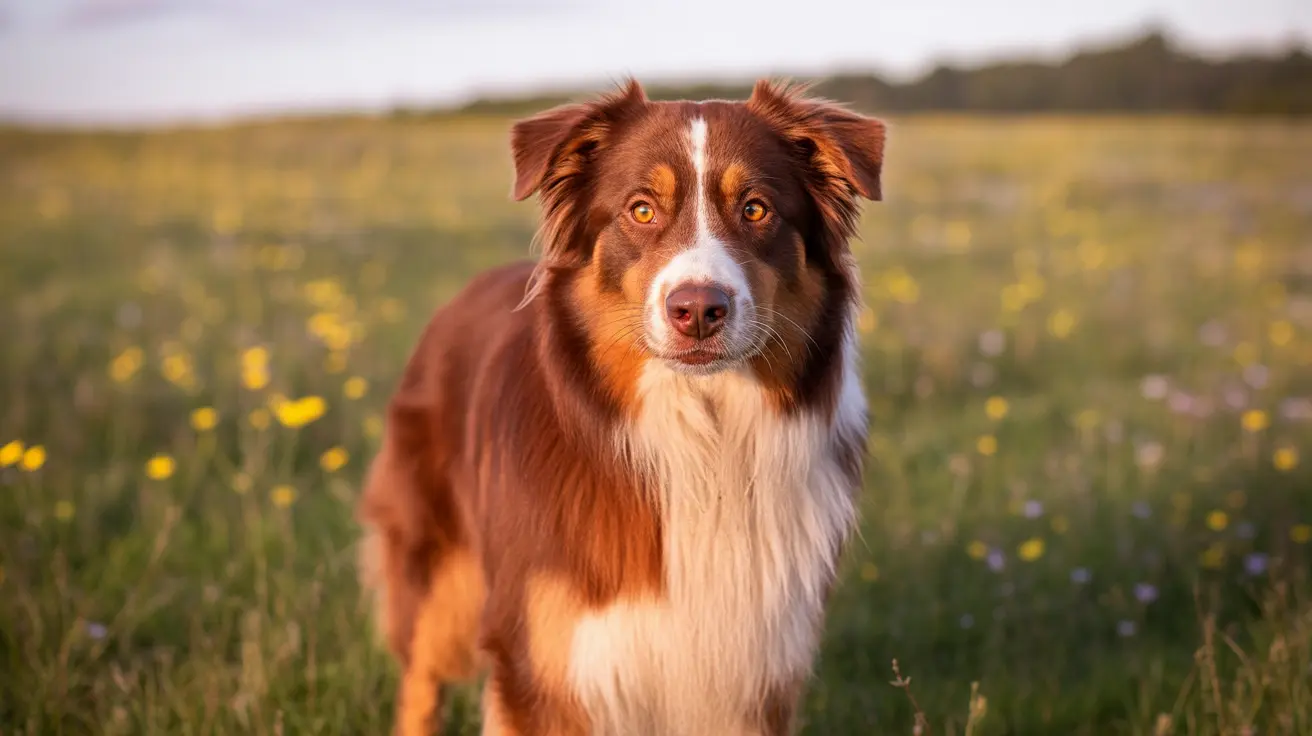Australian Shepherds are renowned for their stunning coat colors and patterns, but some variations are particularly uncommon and highly sought after. In this comprehensive guide, we'll explore the fascinating world of rare Australian Shepherd colors, their genetic foundations, and what makes certain coat variations so special.
From elusive solid reds to mysterious dilute shades, these uncommon color combinations result from specific genetic interactions that make them truly exceptional within the breed. Understanding these rare colors helps breeders, enthusiasts, and potential owners appreciate the unique characteristics that make certain Aussies stand out from the crowd.
The Science Behind Australian Shepherd Color Genetics
Australian Shepherd coat colors are determined by several genetic loci, primarily the A (agouti), B (brown), D (dilution), and E (extension) genes. These genes work together in complex ways to create the variety of colors we see in the breed today.
The inheritance of rare colors often requires specific combinations of recessive genes from both parents. This genetic complexity explains why some colors appear so infrequently in the breed population.
Most Uncommon Australian Shepherd Colors
Solid Red: The Rarest AKC Color
Solid red Australian Shepherds are exceptionally rare because they require two copies of both the red color gene and the solid pattern gene. This double recessive combination makes them among the most unusual colors in the breed.
Red Dilute (Isabella/Lilac)
This ethereal color results from the interaction between dilution and red genes, creating a soft, muted shade that's highly prized among collectors. The presence of both genetic factors makes this color particularly uncommon.
Black and Tan Pattern
Sometimes called "Rottweiler coloring," this rare pattern features distinct tan points on a black base coat. It's an unusual sight in Australian Shepherds and requires specific genetic combinations to appear.
Health Considerations for Rare Color Breeding
While most rare colors don't inherently cause health issues, responsible breeding practices are crucial. The exception is merle-to-merle breeding, which can result in serious health complications for puppies.
Ethical breeders prioritize health testing and careful genetic selection over the pursuit of rare colors. This ensures the well-being of the breed while still allowing for the occasional appearance of these unique variations.
Breeding for Rare Colors
Producing rare-colored Australian Shepherds requires extensive knowledge of color genetics and careful breeding practices. Breeders must understand:
- The specific genes involved in rare color production
- How to test for carrier status
- The importance of maintaining genetic diversity
- Health implications of various color combinations
Value and Recognition of Rare Colors
While rare colors often command premium prices, it's essential to remember that color should never be the primary consideration when choosing an Australian Shepherd. These dogs should be valued first for their temperament, health, and working ability.
All Australian Shepherds, regardless of their color, can excel in various activities and make wonderful companions when properly trained and socialized.
Frequently Asked Questions
What are the rarest Australian Shepherd coat colors and how do they occur genetically?
The rarest Australian Shepherd colors include solid red, red dilute (Isabella/lilac), and black and tan. These colors occur through specific combinations of recessive genes inherited from both parents, making them statistically uncommon in the breed.
How can I identify if an Australian Shepherd has dilute or red dilute (Isabella/lilac) coloring?
Dilute colors appear as softer, muted versions of standard colors. Red dilute (Isabella/lilac) shows as a pale, grayish-pink shade. These dogs often have lighter-colored noses and eyes compared to their non-dilute counterparts.
Why are solid red Australian Shepherds so rare compared to other coat colors?
Solid red Australian Shepherds are extremely rare because they require two copies of both the red color gene and the solid pattern gene. This double recessive combination is statistically unlikely and rarely occurs without specific breeding programs.
Are there any health concerns associated with breeding Australian Shepherds for rare colors like dilute or merle?
Most rare colors don't cause health issues, but merle-to-merle breeding can result in serious problems including deafness and vision defects. Dilute colors generally don't carry health risks, though careful breeding practices should always be maintained.
How do breeders intentionally produce rare Australian Shepherd colors like black and tan or sable?
Breeders use genetic testing to identify carriers of rare color genes and carefully plan matings between compatible parents. This process requires extensive knowledge of color genetics and may take several generations to achieve desired results.
Whether you're a breed enthusiast or potential owner, understanding rare Australian Shepherd colors adds to the appreciation of these remarkable dogs. While these unique variations can be striking, remember that a healthy, well-tempered Australian Shepherd of any color makes an excellent companion.






